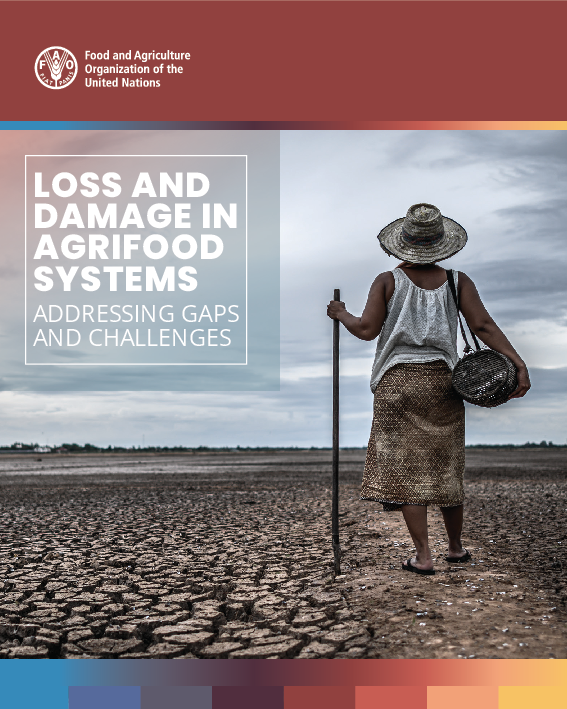- Share this article
- Subscribe to our newsletter
Loss and damage in agrifood systems
Agrifood systems are facing an escalating threat from climate change-induced loss and damage, and actions – including increasing financing – must be taken to address their vulnerabilities, according to the report Loss and damage in agrifood systems released by the Food and Agriculture Organization of the United Nations (FAO) on the side-lines of the UN Climate Conference COP28 in Dubai, United Arab Emirates, in December 2023.
The report, including an in-depth analysis of Nationally Determined Contributions (NDCs), reveals that about one third (or 35 per cent) of current climate action plans explicitly refer to loss and damage, highlighting the growing relevance of the issue on the global stage, with agriculture being identified as the single most impacted area.
Despite its central role in global agrifood systems – encompassing production, distribution and consumption – agriculture has not been a primary focus in discussions surrounding loss and damage, the authors note. However, communities relying on agrifood systems for their livelihoods currently face acute challenges, including poverty, food insecurity and limited access to services.
Climate events are likely to cause further loss and damage
Losses and damages in agrifood systems represent a substantial economic burden. Data from post-disaster assessments conducted between 2007 and 2022 indicate that agricultural losses accounted for an average of 23 per cent of the total impact of disasters across all sectors. Droughts alone caused over 65 per cent of losses in the agriculture sector during this period, translating to an estimated USD 3.8 trillion worth of crops and livestock production lost in the last 30 years.
According to the authors, climate events are anticipated to cause further loss and damage, impacting productivity, efficiency and the livelihoods of those dependent on agrifood systems.
Enhancing the methodologies and tools
The report also identifies a pressing need to enhance the methodologies and tools for assessing negative impacts of climate change, with existing methods often failing to capture slow-onset events and non-economic dimensions of loss and damage. The lack of an internationally agreed definition on loss and damage further complicates efforts to address the challenge, the study finds.
Financial support is identified as a crucial factor by the authors, with current levels of tracked climate finance falling below the potential needs for agrifood systems. The study also notes that specific data on financial needs for loss and damage is lacking, calling for solutions to target this issue.
Actions to mitigate the impact of loss and damage
Moving forward, the report outlines a series of actions to mitigate the impact of loss and damage in agrifood systems and advocates for international collaboration and stronger partnerships. These include clarifying the meaning of loss and damage for national agrifood systems, enhancing climate risk assessment, investing in data collection and research, implementing adaptation measures, strengthening emergency response and adopting a recovery approach based on “building back better”.
As climate change continues to surpass adaptation limits, authors highlight that the spotlight on agriculture as a vulnerable sector becomes increasingly crucial for global efforts to build resilient and sustainable food systems.
(FAO/ile)
Read more and download the report on the FAO website





Add a comment
Be the First to Comment